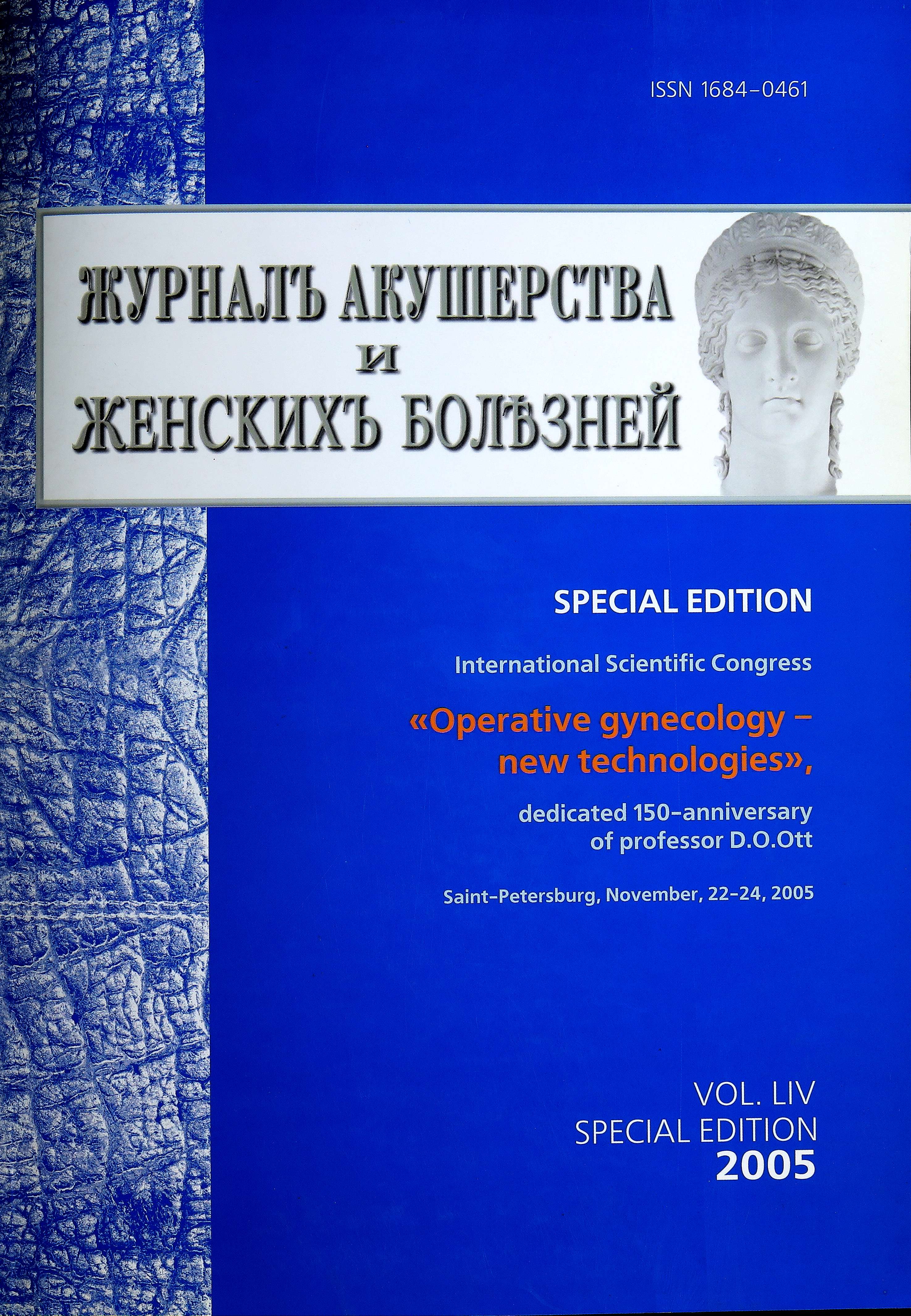The complete management of pelvic prolapse by laparoscopic promontofixation & modified burch Colposuspension
- Authors: Wattiez A.1, Botchorishvili R.2, Canis М.2, Rabischong B.2, Pouly J.I.2, Mage G.2
-
Affiliations:
- C.H.U. Hautepierre
- Polyclinique de L’Hotel-Dieu, BD Leon Malfreyt
- Issue: Vol 54, No 5S (2005)
- Pages: 38a-39a
- Section: Reviews
- Submitted: 15.11.2005
- Published: 15.11.2005
- URL: https://journals.eco-vector.com/jowd/article/view/87229
- DOI: https://doi.org/10.17816/JOWD87229
- ID: 87229
Cite item
Full Text
Abstract
Introduction: Genital prolapse is a common problem in women. About 50% of parous women are estimated to have some form of pelvic organ prolapse, with 10% to 30% requesting treatment of their symptoms.
Full Text
Introduction: Genital prolapse is a common problem in women. About 50% of parous women are estimated to have some form of pelvic organ prolapse, with 10% to 30% requesting treatment of their symptoms. The wide variety of surgical techniques used to treat this problem demonstrate how difficult it is to manage. Laparoscopic surgery offers a new approach. It allows a good view of the anterior and posterior compartments so that a global approach for the prolapse is possible by the same surgical route. Laparoscopic promontofixation with synthetic mesh, combined with a approach to the posterior compartment by the posterior extension of the mesh, provides a complete range of treatment for all types of feminine genital prolapse and associated symptoms
Patients and operative procedure. This was a retrospective study based on operations performed at our institution from January l998 to December 2003. 138 patients with genital prolapse were operated laparoscopicaly. This laparoscopic technique follows the usual steps for pelvic prolapse repair. The first stage is the identification and preparation of the sacral promontory, including the fixation of the sigmoid colon by suture. The dissection from the posterior parietal prevertebral peritoneum is continued to the base of the right utero-sacral ligament. The rectovaginal space is then dissected for sufficient space to reinforce the rectovaginal space with mesh.. The vesico-uterine space is then opened for placement of the anterior mesh. A subtotal hysterectomy is performed in the majority of cases in order to better preserve the pericervical ring. A 4 x 30 cm polyester mesh is used. Posteriorly, it is applied to the levator ani muscles bilaterally, covering the vagina posteriorly, and fixed to the base of the uterosacral ligaments. The opposite end is applied to the vesico-uterine space, and fixed at three points, causing the mesh to be doubled over itself. Reperitonisation is performed so as to allow space for the folded end to extend superiorly towards the sacral promontory. This is then fixed to the sacral promontory. The upper reperitonisation from the promontory to the cul-de-sac is then performed. A modified Burch colposuspension is then performed with the installation of TfloatingУ mesh for longevity. The procedure is completed with morcellation of the uterus.
Results. The mediane follow up was 31 months (range from 11 to 79 months ) for 131 patients followed. 12 patients (9%) presented subjective symptoms (discomfort) of prolapse recidive. 7 patients (5%) presented mesh erosin.
Comparative (anatomical) results for maximal level of prolapse
| Pre-operative | 1 month | Long term |
Stade 0 | 0 | 80 (63%) | 28 (26%) |
Stade 1 | 0 | 37 (29%) | 42 (39%) |
Stade 2 | 2(1%) | 9 (7%) | 26 (24%) |
Stade 3 | 66 (50%) | 1 (1%) | 11 (10%) |
Stade 4 | 63 (49%) | 0 | 1 (1%) |
Fig. 1.
Conclusion. Laparoscopic promontofixation provided good long term support of the pelvic floor in 89%. Our experience confirms the tremendous potential of laparoscopic surgery for the treatment of all aspects of pelvic floor disorders by the same route. Stress incontinence, cystocele, hysterocele, rectocele, or enterocele can be treated effectively and safely . However, the operative time is longer than with the open route, and the surgeon must be highly experienced.
About the authors
A. Wattiez
C.H.U. Hautepierre
Email: info@eco-vector.com
Department of Obstetrics and Gynecology
France, 67098 StrasbourgR. Botchorishvili
Polyclinique de L’Hotel-Dieu, BD Leon Malfreyt
Email: info@eco-vector.com
Department of Obstetrics and Gynecology
France, 63058 Clermont-FerrandМ. Canis
Polyclinique de L’Hotel-Dieu, BD Leon Malfreyt
Email: info@eco-vector.com
Department of Obstetrics and Gynecology
France, 63058 Clermont-FerrandB. Rabischong
Polyclinique de L’Hotel-Dieu, BD Leon Malfreyt
Email: info@eco-vector.com
Department of Obstetrics and Gynecology
France, 63058 Clermont-FerrandJ. I. Pouly
Polyclinique de L’Hotel-Dieu, BD Leon Malfreyt
Email: info@eco-vector.com
Department of Obstetrics and Gynecology
France, 63058 Clermont-FerrandG. Mage
Polyclinique de L’Hotel-Dieu, BD Leon Malfreyt
Author for correspondence.
Email: info@eco-vector.com
Department of Obstetrics and Gynecology
France, 63058 Clermont-FerrandReferences
Supplementary files








